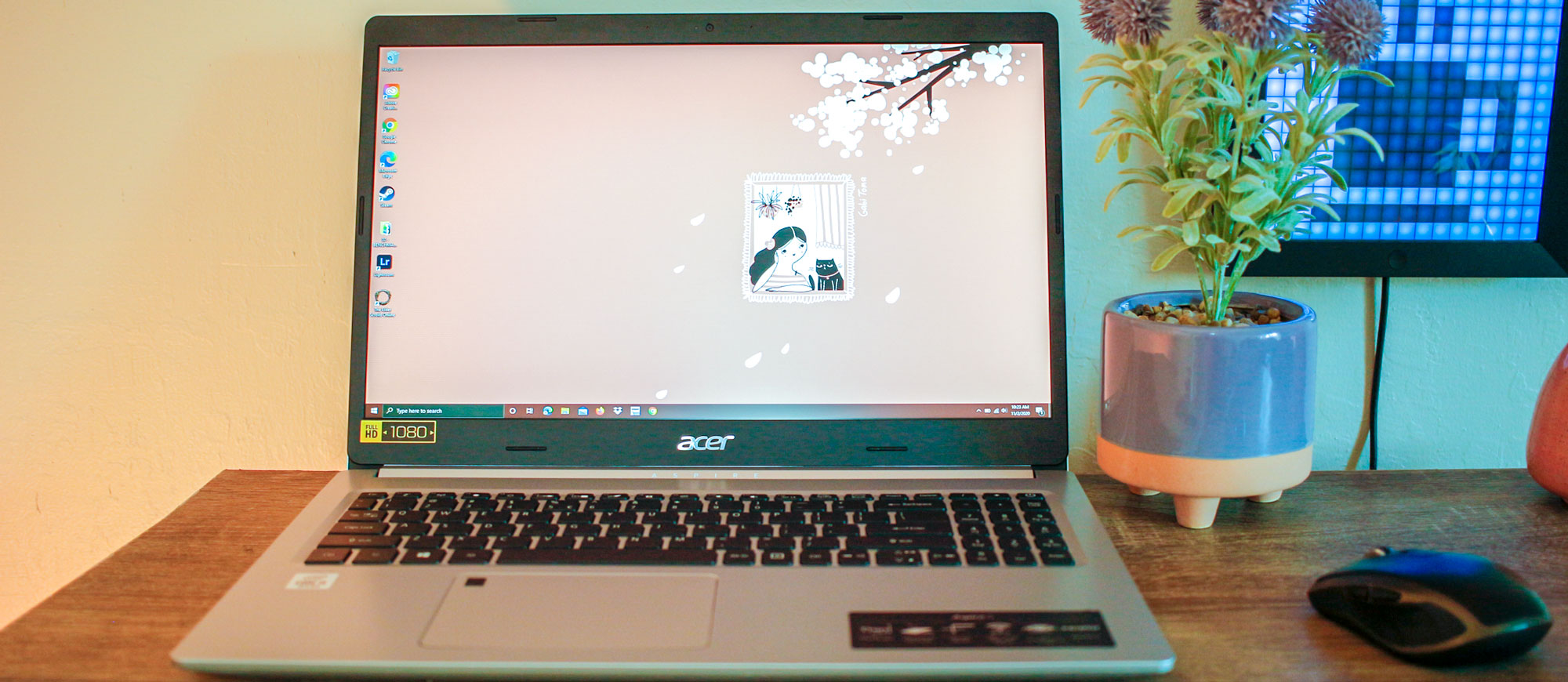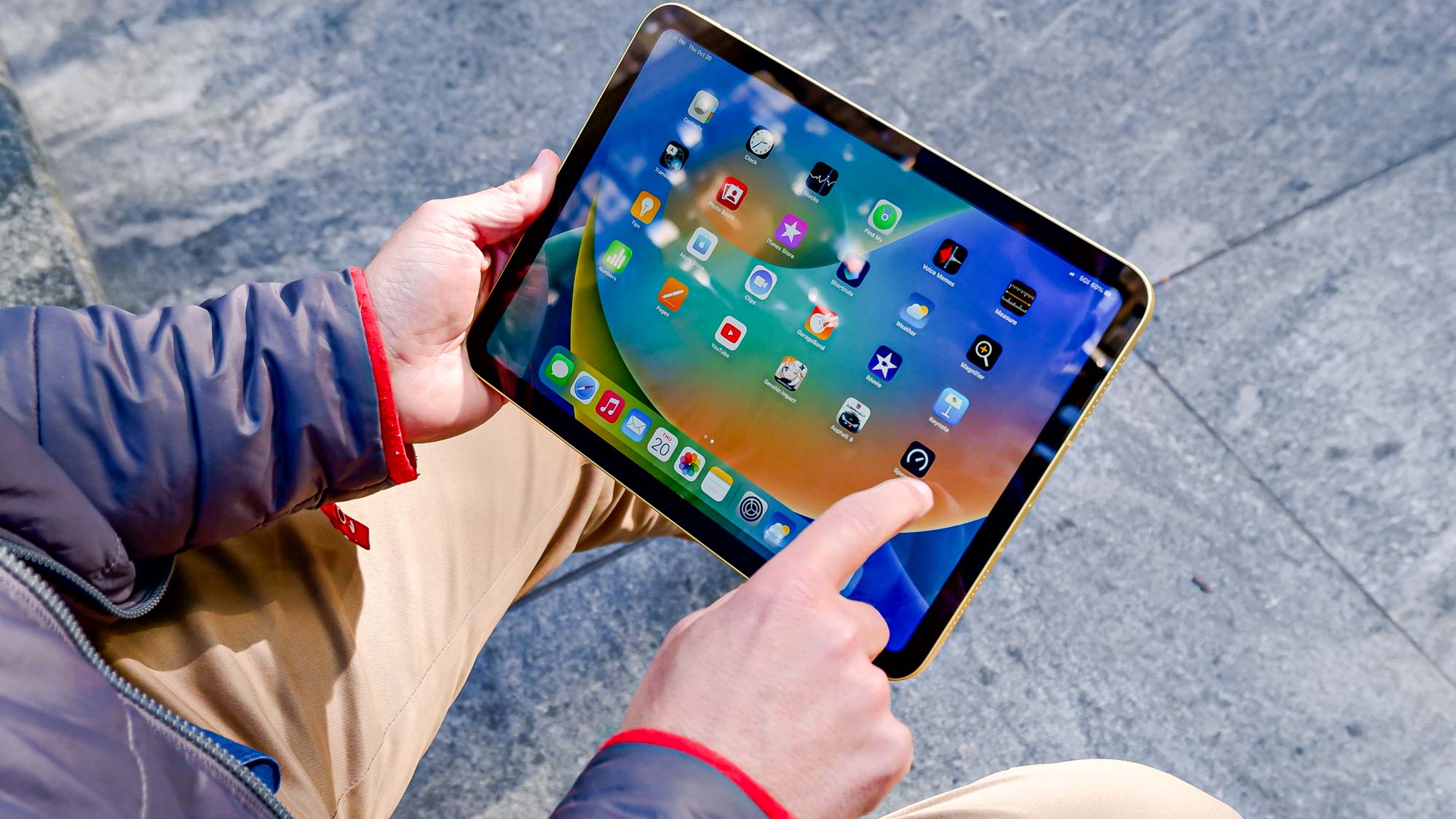Tom's Guide Verdict
The Acer Aspire 5 is a budget laptop that’s good in a pinch. But if you can hold out you can find something with much better battery life.
Pros
- +
Affordable
- +
Full keyboard layout
- +
Upgradeable hardware
- +
Ample port selection
Cons
- -
Poor battery life
- -
Slippery trackpad
Why you can trust Tom's Guide
The new Acer Aspire 5 has a lot of expectations, as its predecessor was the best budget laptop around, owning a spot on our best laptops list. With everyone working from home and kids resigned to a corner with the computer for school time, there is a dire need for excellent affordable laptops, and your hopes may rise as you see it packs either 10th Gen Intel CPUs or brand new AMD Ryzen chips.
And while the Acer Aspire 5 is a good deal if you need a new laptop now, many of its quirks may be hard to ignore—particularly its poor battery life. That being said, it hits all the points for your basic computing needs, including steady performance and a wealth of ports. However, as this Acer Aspire 5 review will show, once the world is back to "normal," it might not be the first model you jump to.
- The best cheap laptop deals
Acer Aspire 5: Price and Configurations
The Acer Aspire 5 is available in various configurations, both with 10th-generation Intel processors and the latest AMD Ryzen architecture. We tested an Intel-based model that starts at around $550, with an Intel Core i5-1035G1 processor, 8GB of RAM, integrated Intel UHD graphics and a 256GB SSD (with options for expanding storage).
Other configurations include the $400 Core-i3 model with 4GB of RAM and 128GB of storage, or the beefier Core i7 version with up to 12GB of RAM, a dedicated Nvidia GeForce MX250 graphics card, and up to 512GB of storage starting at $700. All models have a 15.6-inch 1920 x 1080-pixel display and a 48Wh battery.
It's worth taking a look at our Acer promo codes for ways to lower the cost.
Acer Aspire 5: Design
The Acer Aspire 5 is pretty plain. Its decidedly utilitarian design reminds me of the kind of laptop that comes off the IT storage rack. If what you wanted was a laptop with a slim profile, the Aspire 5 isn't it. At the very least, this laptop is upgradeable, with easy access to the motherboard, plus a hard drive installation kit in the box for adding storage.
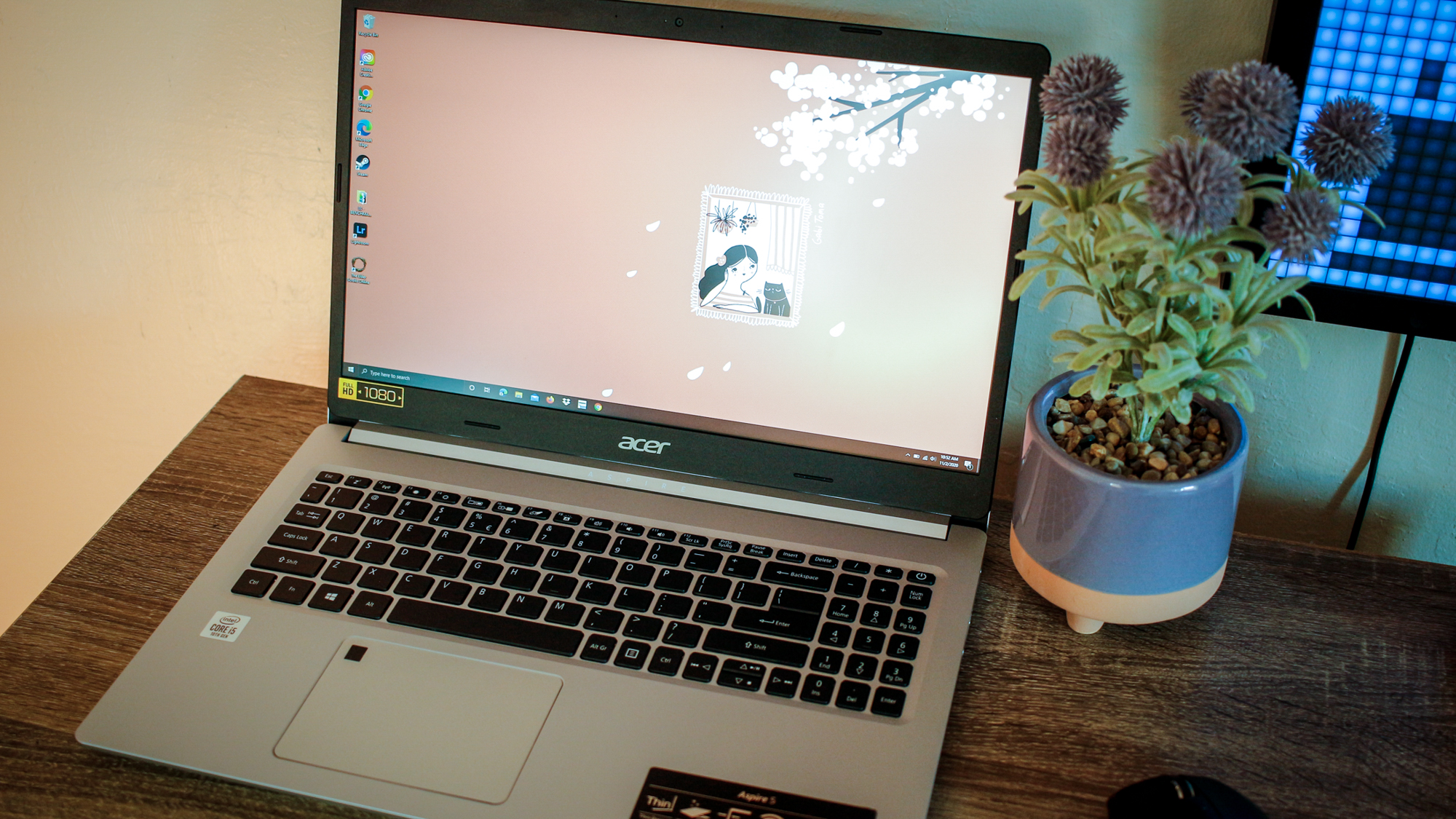
The Aspire 5's aluminum shell feels flimsy, and pressing on the soft chassis confirmed my notions that there isn't much between the frame and the motherboard. I don't ever want to drop this laptop for fear of what would happen to it. Altogether, the package is under 4 pounds, light enough to freely cart under your arm around the house, but dense enough that you will feel its weight inside a carrier.
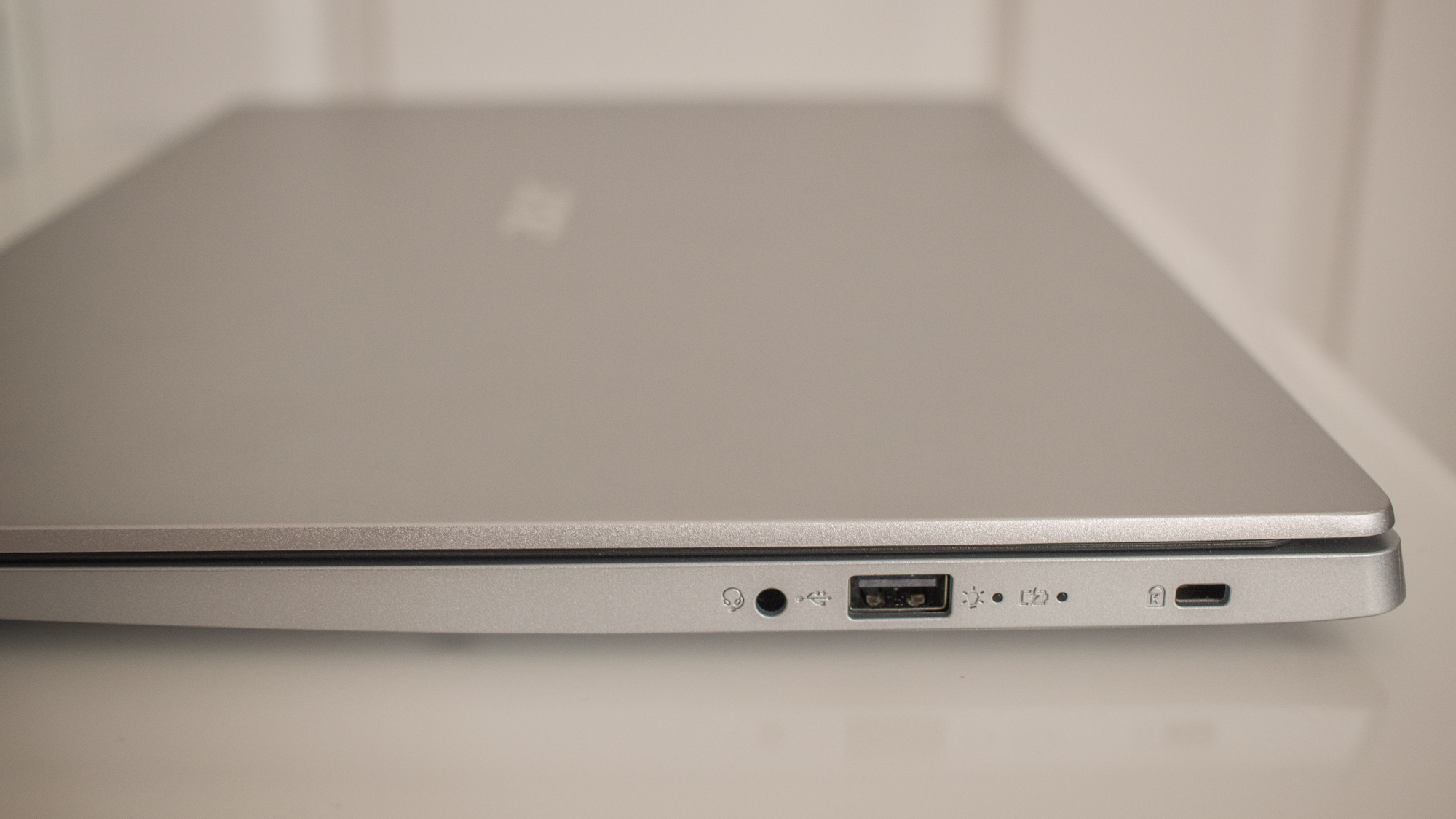
Measuring 14.3 x 9.9 x 0.7 inches and weighing 3.7 pounds, it's only slightly heavier than the Lenovo Yoga C740 (12.7 x 8.5 x 0.6 inches, 3 pounds), but lighter than, the Asus VivoBook S15 (14.1 x 9.2 x 0.6 inches, 4 pounds). It's still a large laptop that will fit awkwardly in a small tote bag and touch the edges of your favorite backpack.
Acer Aspire 5: Ports
The Acer Aspire 5 has a multitude of ports making this a suitable laptop for semi-permanent docking to a larger workstation. It has three USB-A ports and one USB-C for peripherals. There's also an Ethernet port for hardwiring into the internet, an HDMI port for a display, a Kensington Lock connector for tethering the laptop to a table, and a standard headphone jack.
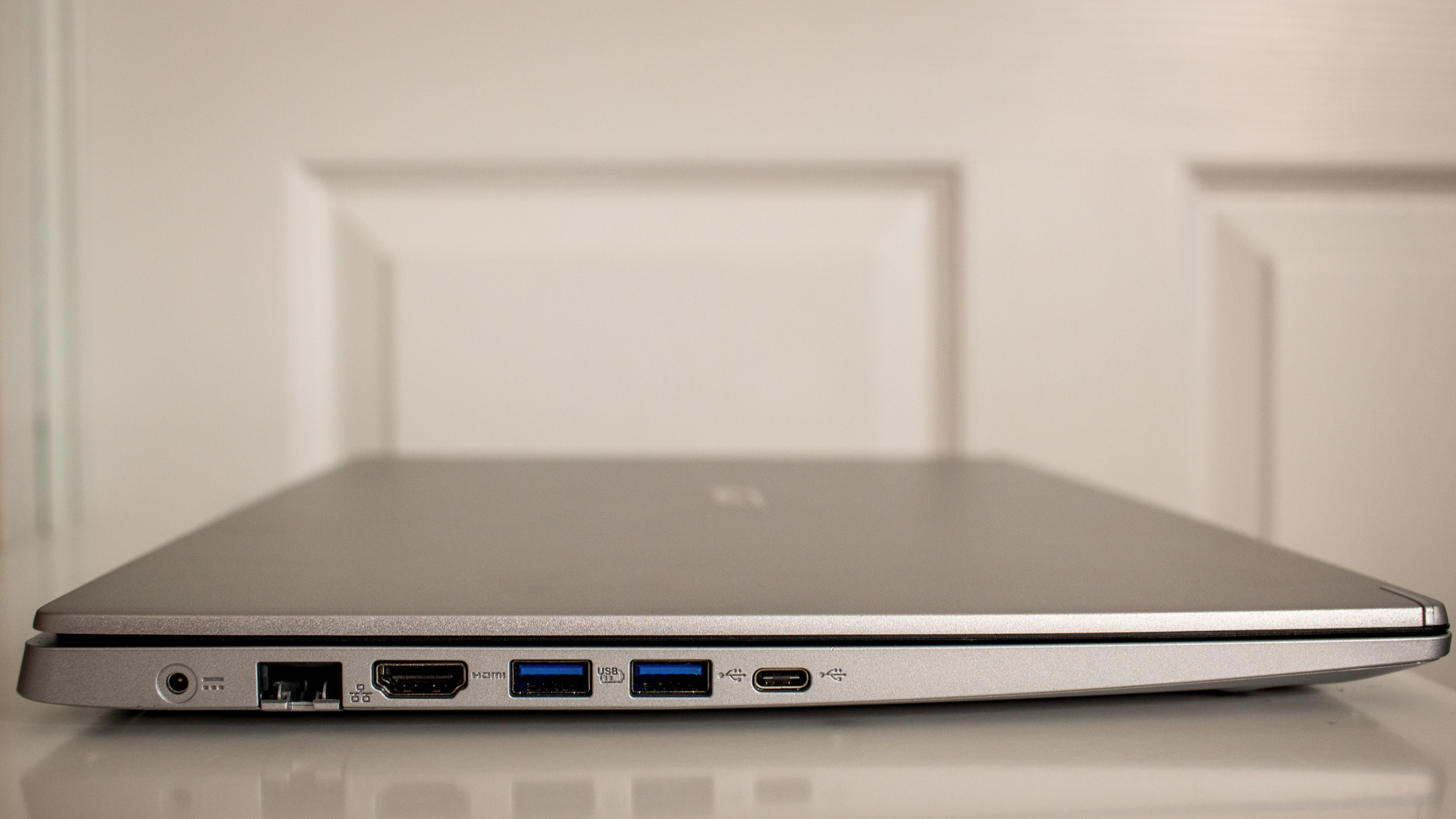
The power adapter is proprietary, making charging an issue of always having the right cable. The lack of a microSD card reader feels like an oversight on a laptop that's supposed to offer utility on a budget.
Acer Aspire 5: Display
The Acer Aspire 5's 15.6-inch 1080p display is excellent for getting work done, though the matte screen sometimes catches a glare from external light. With an average of 258 nits, the display is a bit dim, though brighter than competing models like the Asus VivoBook and Lenovo Yoga C740, measuring at 248 nits and 250 nits, respectively. The screen is fine for night-time work but can make the Aspire 5 hard to see in brighter light.
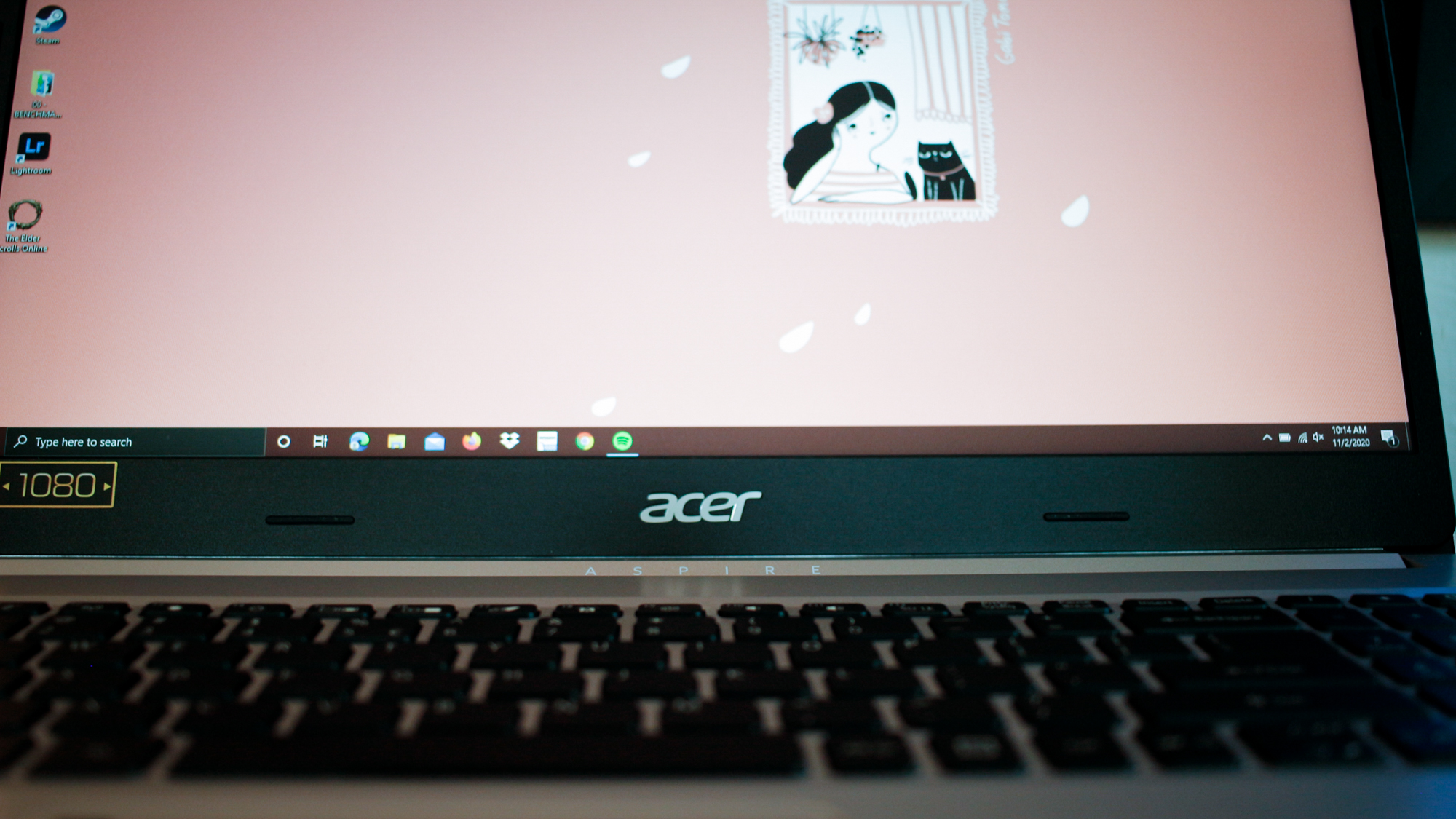
Color saturation is more intense on the Aspire, helping increase the vibrancy of otherwise dull scenes, like the earth tones in a 90's soap. Conversely, nature documentaries and moody videos look great and are discernable. In lab tests, the Aspire 5 scored 63%on the sRGB color gamut, putting it on par with the similarly-priced Asus VivoBook (63%). The Lenovo Yoga C740 is a better deal with its 111% color gamut. You'll enjoy watching videos and scrolling through the internet on the Aspire 5, but photo editing and video work will require an external monitor with better color reproduction.
Acer Aspire 5: Audio and cameras
The Acer Aspire 5 is an excellent laptop for catching up on the latest content. It has down-facing stereo speakers, which are decently bassy. I could hear sitcom dialogue clearly across the room, and low tones came through while shuffling through mellow beats. I preferred to listen to music with the laptop perched on top of a table, as cradling it in your lap can muffle the sound.
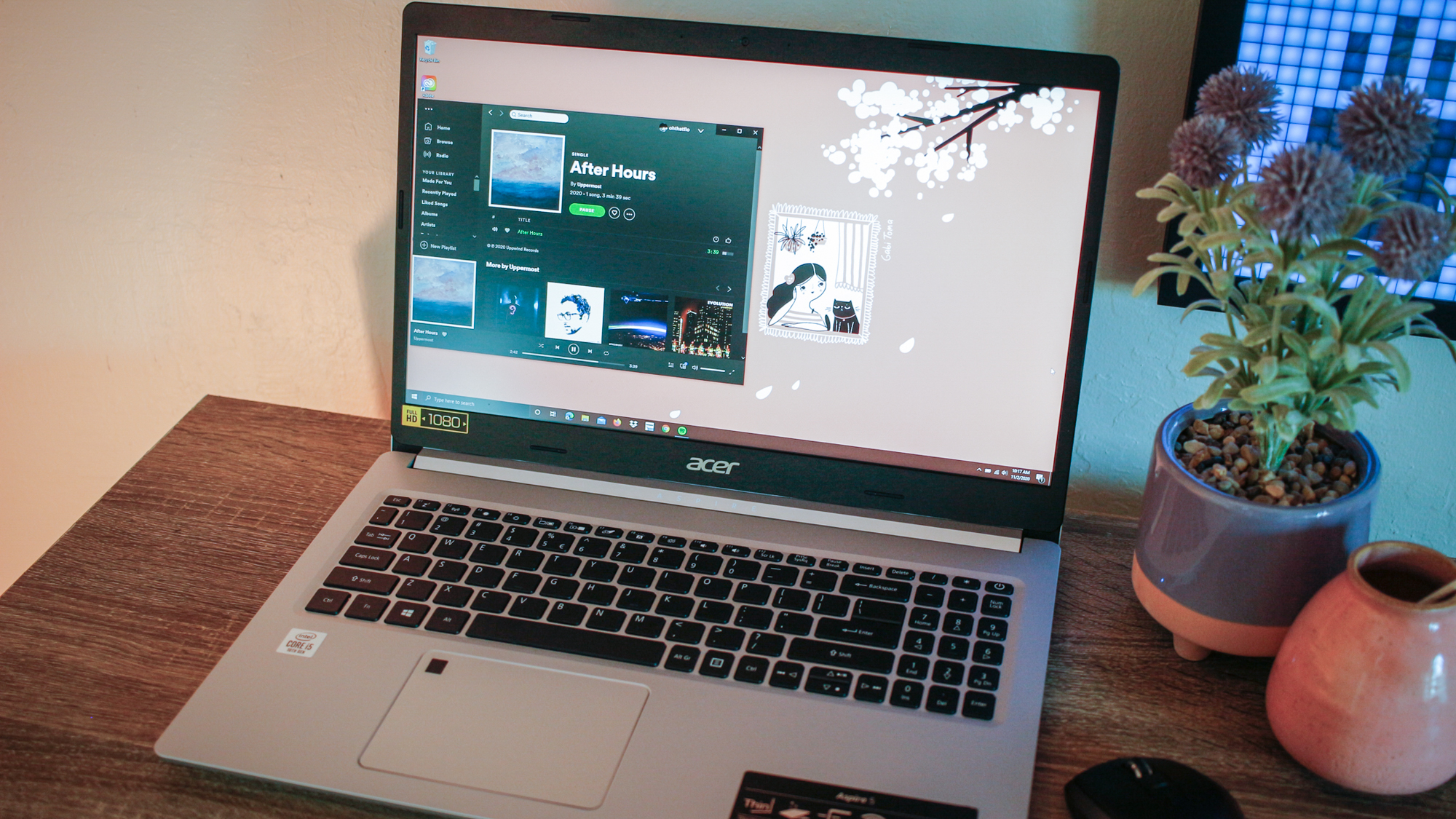
The Aspire 5's 720p webcam sits atop the display. It serves its purpose when Skyping in with your boss for a quick check-in or to say hello to a friend, but it's unimpressive otherwise. You'll need an external webcam for anything professional-seeming.
Acer Aspire 5: Keyboard and touchpad
The Aspire 5's chiclet keyboard is full-size, complete with a number pad on the right side for meticulous data entry. I found the keyboard comfortable for typing enough that I wrote this entire review on the laptop. That said, because of this laptop's massive build, small hands may feel more comfortable multitasking while docked with their favorite keyboard and mouse.
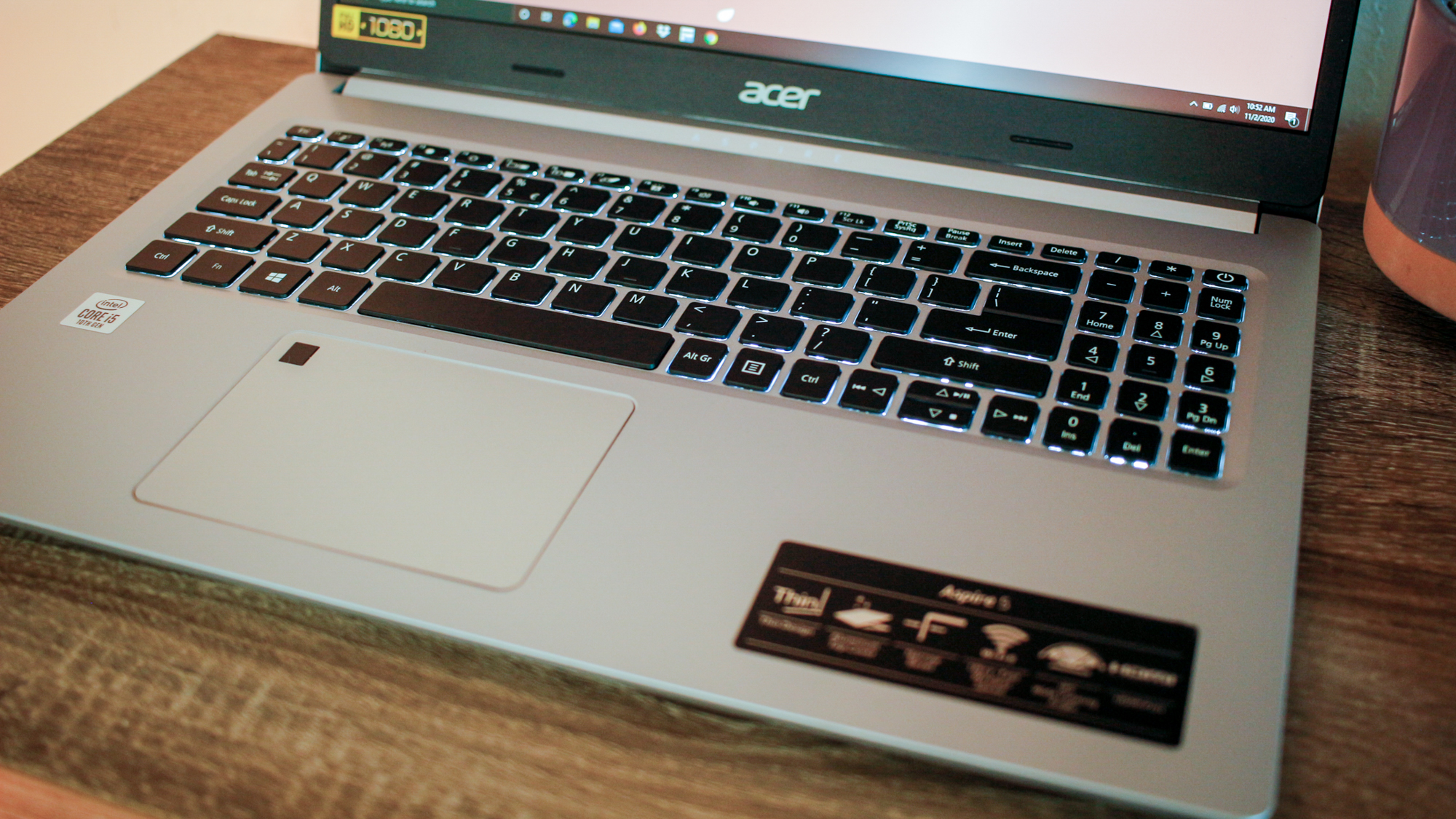
Acer attempts to strive for sleekness by making the trackpad the same aluminum finish as the chassis. Your palm will have a hard time differentiating between the spaces, however. More than once, I managed to bump it and navigate away from the app I was using. You'll want to turn off the multitouch gestures on the trackpad, anyway, as the touch-and-drag mechanism can be too fussy to use confidently. After turning that off, the trackpad became much more manageable, and I found its responsiveness to be on par with some of my favorite Chromebooks. There is also a Function key to turn off the trackpad when you're in serious writing sessions.
Acer Aspire 5: Performance
Our version of the Aspire 5 features a 10th-generation 1GHz Intel Core i5 processor, 8GB of RAM, and an Intel UHD Graphics card. Its internal configurations are decidedly middle-of-the-line, but you'll no doubt get ample mileage out of this machine. The Core i5 can handle Steam, Chrome, Spotify, and Firefox all running processes simultaneously. The integrated graphics card means you're limited to low quality or old school gaming for passing the time, but I was still able to eke out about 40frames-per-second in Elder Scrolls Online. Once you set the game to high resolution graphics, the rate drops to as low as 10 fps during an action-packed scene. It's a true testament to the limitations of the integrated graphics card.
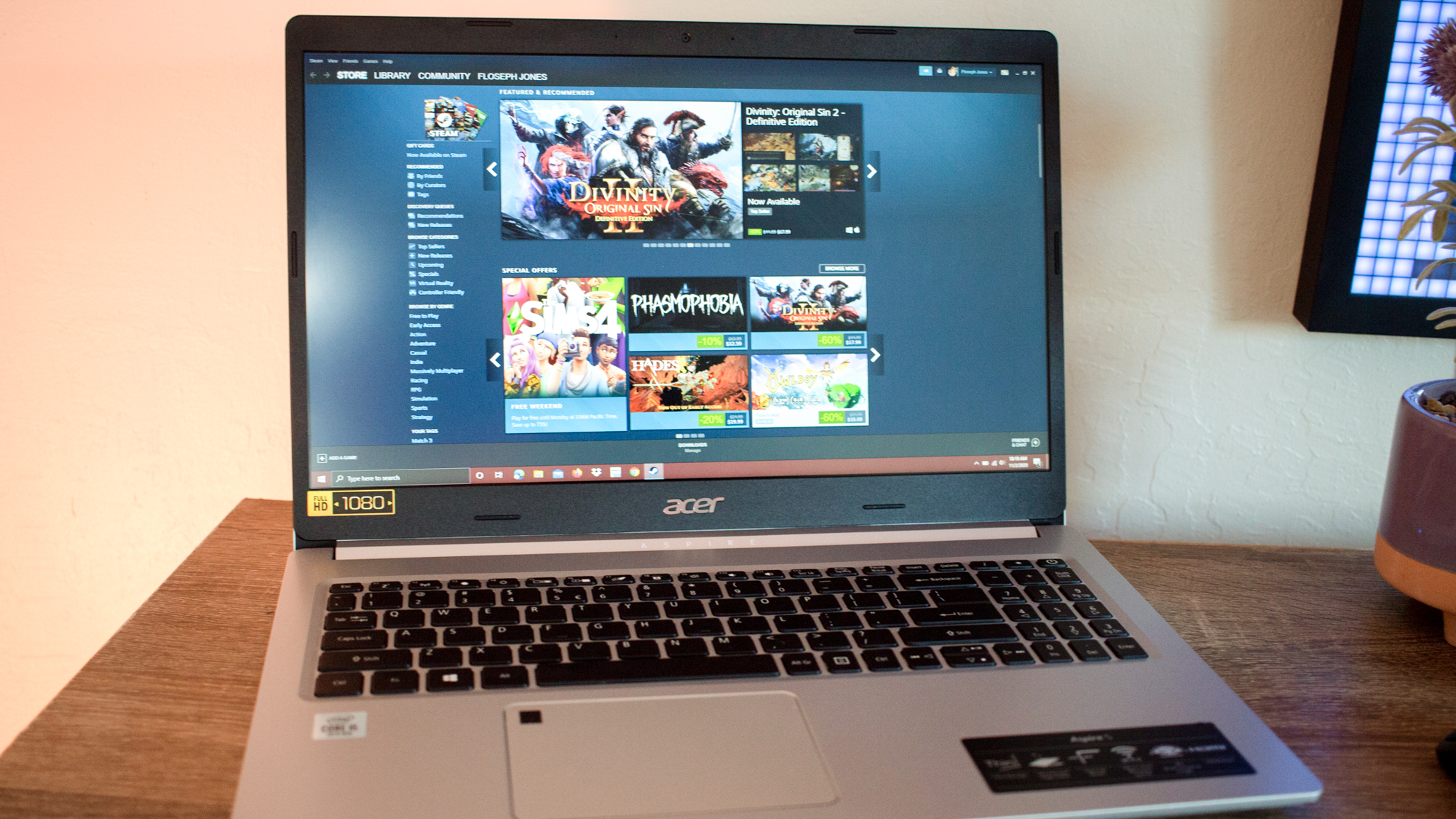
Despite anecdotal evidence that suggested otherwise, the Aspire 5 fell short in lab tests. The laptop scored a measly 2,744 in Geekbench 5.0—far from the 3,452 average for a Core i5 device in this tier.
The Asus VivoBook and Lenovo Yoga C740, both Core i5 laptops, were much closer to the norm in their respective tests, coming in at 3,560 and 3,878. They were both faster at transcoding 4K video in Handbrake, too. The Acer Aspire took 21 minutes and 55 seconds to transcode, while the VivoBook and Yoga C740 both finished in under 20 minutes.
Acer Aspire 5: Battery life
In lab tests, the Aspire 5 lasted 6 hours and 55 minutes—about an hour less than Acer's initial rating. The average for a laptop of this size is nearly nine and a half hours. The Aspire 5 has a disparately short lifespan compared to laptops like the Lenovo Yoga C740, which has similar internals and lasted over a whopping 10 hours. A few times throughout my week, I found the Aspire 5 in desperate need of a charge after leaving it behind on standby. This is the kind of laptop to leave docked and tethered to a workstation.
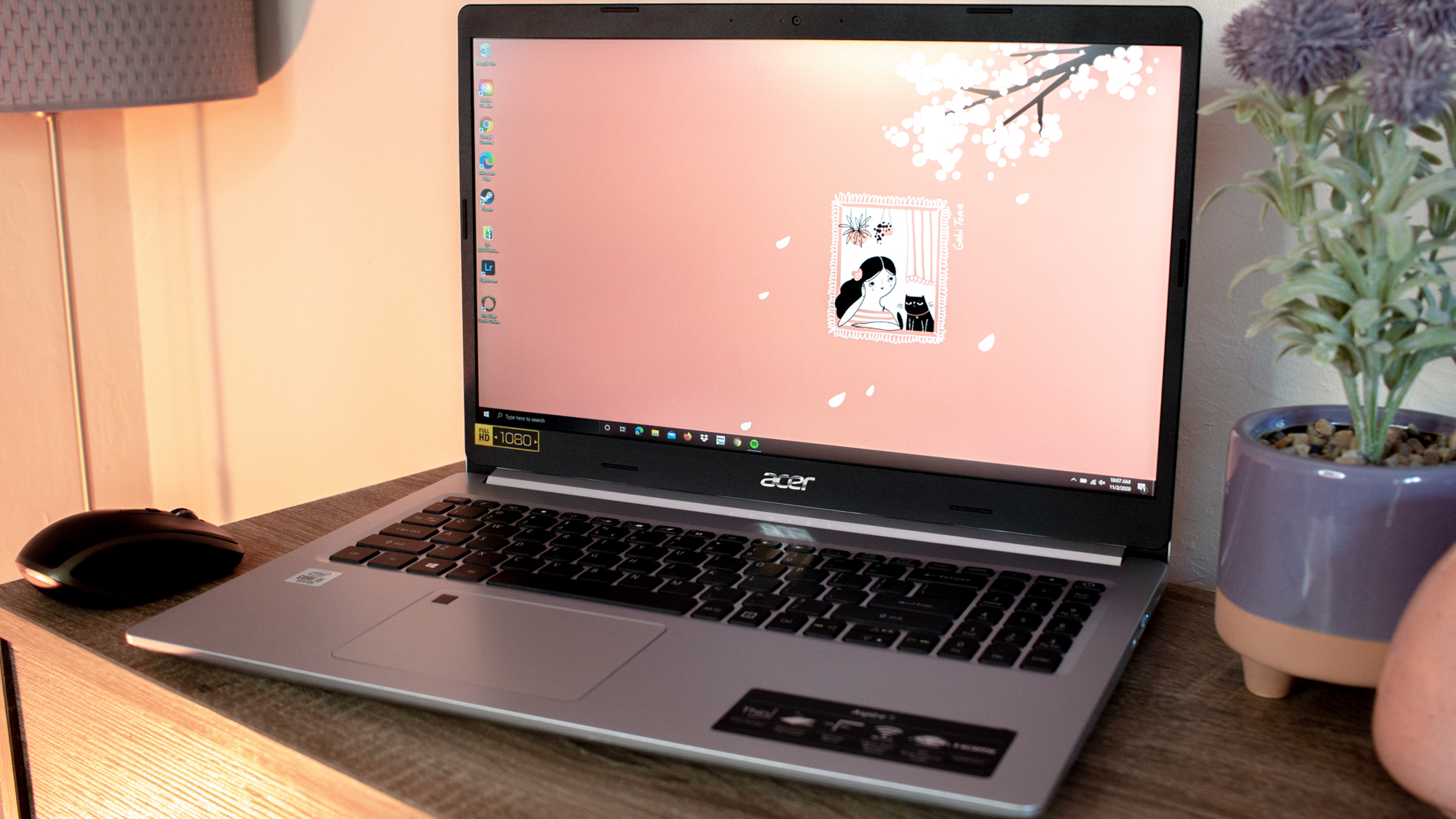
The Acer Aspire 5 is not a laptop to consider for being out in the world and away from a plug. The Aspire 5 burned through about 40 percent of its battery streaming video through Google Chrome for 40 minutes. This was on Windows 10's "better battery" mode. After about two hours, the Aspire 5 had nearly 30 percent of battery left. Acer says the Aspire 5 can manage up to eight hours of battery life, but it seems to fizzle out faster if there's video playback involved.
Acer Aspire 5: Heat
While downloading apps, streaming Pluto TV in Google Chrome, and writing this article, the Acer Aspire 5 tugged along without feeling too hot to handle. In lab tests running a fullscreen HD video for 15 minutes, the Aspire 5 measured on average 71 degrees Fahrenheit, which is quite comfortable compared to the 95-degree comfort threshold. At its hottest point on the keyboard, between the G & H keys, it read at 86 degrees. The system certainly does its best to handle heat output, but the fans come on so often and are so loud that it was sometimes hard to hear dialogue or music without turning up the volume.
Acer Aspire 5: Verdict
If you're looking for an affordable laptop to stay docked all the time, you're getting a good deal with the Aspire 5. The capable, middle-of-the-line Core i5 and integrated graphics can handle the work you need to get done. And while the trackpad takes some getting used to, the comfortable full-size keyboard makes writing this many words a breeze.
Parents looking for a laptop for their kid will be disappointed by the battery life on the Aspire 5, however, especially with today's new way of remote-learning-wherever-it's-comfortable. That's something to consider along with the Aspire 5's attractive price tag. As this Acer Aspire 5 review has shown, there are caveats to consider, and without the nice-to-haves like a touchscreen display and a memory card reader, it's a laptop that's hard to want to invest in.
Florence Ion has worked for Ars Technica, PC World, and Android Central, before freelancing for several tech publications, including Tom's Guide. She's currently a staff writer at Gizmodo, and you can watch her as the host of All About Android on the This Week in Tech network.
